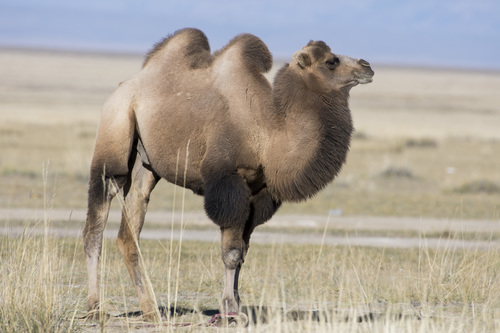
Bactrian Camel
The Bactrian camel, with its distinctive twin humps, thrives in the harsh Asian steppes. Remarkably resilient, it endures extreme temperatures and scarce water, vital to nomadic life. Its unique adaptations highlight nature's ingenuity, making it a captivating subject for both science and art.
35-50 years
Lifespan
600.0 - 816.0 kg
Weight
Height: 1.7 - 2.1 m
Size
Brown, Tan
Color
40 mph
Top Speed
Characteristics
Native to the steppes of Central Asia, Camelus bactrianus, or the Bactrian camel, is easily recognized by its two humps. Adapted to harsh desert climates, it can withstand extreme temperatures and go without water for several days. This species plays a crucial role in traditional pastoral nomadism.
Distribution Range of the Bactrian Camel
Camelus bactrianus, commonly known as the Bactrian camel, is native to the steppes of Central Asia, particularly in regions that include parts of Mongolia, Xinjiang in China, Kazakhstan, and parts of Iran and Afghanistan. Historically, wild populations were found in the Gobi Desert and surrounding areas.
Bactrian Camel's Habitat
Environmental Conditions
The Bactrian camel inhabits harsh, arid environments characterized by extreme temperature fluctuations. These regions experience scorching hot summers with temperatures reaching up to 40°C (104°F) and bitterly cold winters that can drop to -30°C (-22°F). The terrain is often rocky, sandy, and sparsely vegetated, with limited water sources.
Ecological Niche
Bactrian camels are well-adapted to survive in desert and semi-desert conditions. They play a crucial role in their ecosystem by grazing on tough grasses and shrubs, which few other animals can digest. Their ability to withstand extreme dehydration and their efficient fat storage in humps are key adaptations for survival in their native habitat.
Copyright @ Nature Style Limited. All Rights Reserved.
 English
English